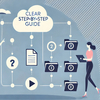
Usability is a term widely used in web and software development. But it can be applied to nearly anything humans interact with. Or even non-humans. Cats, for example, would tell a lot about usability of automatic feeders, smart litter boxes, or scratching posts if they could talk. So, this is quite a universal concept, really. Usability is measured in client satisfaction with some object — an app, for example. It is also about the ease of use and the time and effort it takes users to learn the app.
Now, let’s see how technical documentation fits in. Usability can be applied to printed docs in terms of how easy it is to find what you are looking for (the Index, the contents), how well the technical text is written, the quality of the paper it is printed on, how durable the cover is, etc.
But we are mostly interested in usability from the perspective of online documentation portals. To understand what usability is for an online user manual, let’s see what it isn’t.
Your Online Docs Have Low Usability When

- People are unsatisfied. Depending on how vocal your target audience is in general and how many channels of communication you offer to clients, this can be the best way to learn a thing or two about what your readers honestly think about the documentation you write. Low help topic ratings, miserable review scores, email complaints – these are very blunt and straightforward signs of people being dissatisfied.
- Some otherwise popular functionality is ignored. Let’s take navigation inside a user manual as an example. You would suggest that readers are going to use the search, but instead, they are clicking through the TOC, and the short session length indicates that the readers are struggling to find the info they are looking for. This is bad usability. Either your search box is inconveniently located, or the search engine fails to provide relevant results. A very simple idea follows – usability of technical documentation is tied to the environment where these docs are written and delivered — to the help authoring tool.
- Another thing is workarounds and crutches. While crutches are something the devs will be dealing with internally, workarounds are external. Users just hate it when instead of what’s intuitive and logical they are given a surrogate. For example, when instead of a video embedded in a help topic they need to watch it elsewhere. Or, when there’s no mini-TOC inside a lengthy topic, and readers have to scroll text to see what it is about. Some wouldn’t call these ‘workarounds’, but such tiniest details matter a lot.
Having a team of professional technical communicators is as important as using the right platform where readers can go to read the docs.
Usability of online documentation tools like ClickHelp starts with the fact that to open a help topic a user won’t need more than an internet connection and a device with a web browser. BTW, being offline can be enough, too, as user manuals created in ClickHelp can be shipped along with the products as a file or as a printed brochure.
Conclusion

As we figured out, usability is ‘a thing’ in technical writing and it requires attention from the doc team. User experience consists of multiple aspects and, as they say, a chain is as strong as its weakest link. Technical writers, just like members of all other teams in a company, need to make sure that the bar is raised high and usability of the documents they produce is top level.
Good luck with your technical writing!
ClickHelp Team
Author, host and deliver documentation across platforms and devices



